Golf is a game of precision, power, and finesse—but it’s also one of the most asymmetrical sports out there. Every swing you take is a repetitive, one-sided movement, which can create serious muscle imbalances over time. Imagine training for years only to realize that the very mechanics driving your swing are also setting you up for injury and sub optimal performance.
That’s where single-sided (unilateral) training comes in. Whether you’re aiming for longer drives, more consistency in your shots, or just hoping to stay injury-free, integrating these exercises could be your secret weapon. Which is why after a summer full of golf we are emphasizing unilateral training in this cycle of Lift Heavy, Swing Fast.*
Let’s dive into how single-sided training can reshape your golf game.
1. Improved Balance and Stability
A solid golf swing starts from the ground up, and balance is key. Unilateral exercises like suitcase deadlifts or split squats force you to stabilize one side at a time, strengthening the smaller stabilizing muscles often overlooked in traditional exercises. For example, a single-leg Romanian deadlift improves your hamstrings and glutes—crucial muscles for balance and control during your swing.
2. Injury Prevention
Repetitive swings can cause overuse injuries, especially since one side of your body is doing more work. Single-sided exercises help correct these imbalances by targeting your non-dominant side, ensuring even muscle development and reducing injury risk. Single-arm rows, for instance, help balance your upper body strength, preventing strain on your back and shoulders.
3. Enhanced Power and Swing Efficiency
Power in your golf swing comes from your lower body, particularly your hips and core. Exercises like lateral lunges, single leg bridges and RFE split squats build strength in each leg independently, improving your ability to generate force and transfer energy during your swing. Stronger legs mean a more explosive swing and longer drives.
4. Greater Mobility and Flexibility
Golfers are no strangers to tight hips and shoulders, thanks to the repetitive rotation of the swing. Single-sided exercises can improve flexibility and range of motion, especially in tight areas like the shoulders and hips. Single-arm kettlebell presses, for example, not only build shoulder strength but also enhance mobility, allowing for smoother swings.
5. Improved Mind-Muscle Connection
Unilateral exercises demand focus, making you more aware of how each side of your body moves. This heightened connection can translate to better swing mechanics on the course, as you’ll be more in tune with your body’s movements, leading to more consistent shots.
Key Single-Sided Exercises for Golfers
- Suitcase Deadlifts: Strengthens hamstrings, obliques, and glutes for improved balance.
- RFE Split Squats/Bulgarian Split Squats: Enhances unilateral leg strength and power.
- Single-Arm Rows: Corrects upper body imbalances.
- Single-Arm Kettlebell Presses: Boosts shoulder, wrist and forearm strength and mobility.
- Single-Leg Glute Bridges: Builds hip drive and lower back strength.
The repetitive, off-balance nature of the golf swing makes single-sided exercises essential for any golfer looking to elevate their game. These movements build balanced strength, prevent injury, and improve power—all while enhancing the fluidity of your swing. Prioritizing unilateral training to your routine could be the difference-maker you’ve been searching for.
Every exercise program should incorporate this type of training year-round. In this LHSF cycle, we’re placing special emphasis on it, though these exercises remain a consistent part of our routines throughout the year.








